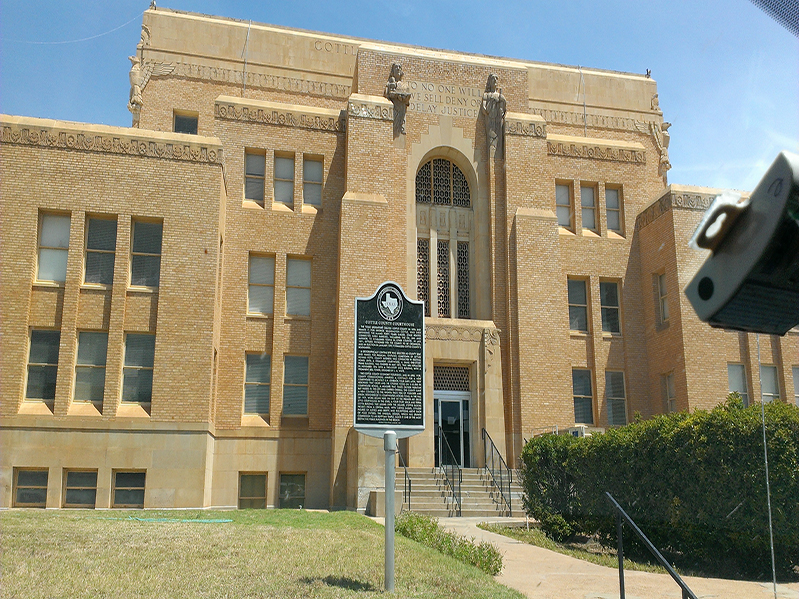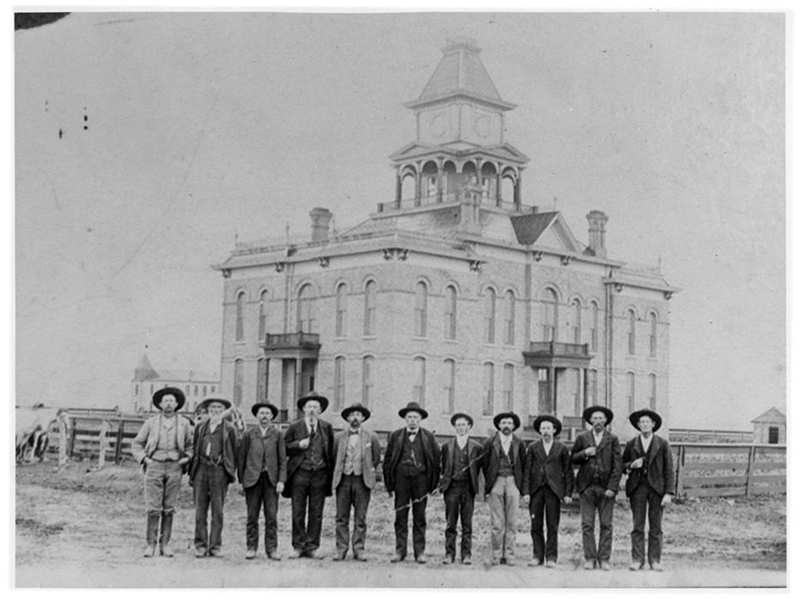 |
This past weekend, I had the very great honor to travel to Paducah, Texas, and meet up with their newspaper publisher, Jimmye Taylor, and the Cottle County librarian, Becky Tucker. Jimmye contacted me last week, out of the blue, asking if we could digitize her newspaper, The Paducah Post. She was retiring and would soon have to shut down the office after over 100 years of publication–almost half of which she oversaw–and she knew that her newspapers needed to be preserved somehow. When I arrived in Paducah, the first thing I planned to do was call Jimmye or Becky. However, my phone didn’t work. I stepped into a CPA office on the square, just down the corner from the publishing office and across the street from the library. The very kind lady who loaned me her cell phone asked, hopeful, “Are you meeting with Jimmye to buy the newspaper?” The other folks in her office nodded their heads, also optimistic. Although I was disappointed to answer that no, I was only here to pick the newspapers up to archive and digitize them, I told them that we would do our best at UNT to preserve the community’s history by preserving the newspaper both physically and digitally, and by making it openly, freely available on The Portal to Texas History. We all agreed about the significant role of a newspaper in a community, particularly for a county seat.
Paducah is a town of 1,169 people and is the county seat for Cottle County. The Paducah Post has represented the community’s history for over a century, depicting both daily life of its citizens and historic events of the county and region.
 |
Near my desk right now is the 1952 bound volume of issues. As I open up the May 22nd, 1952 issue, I see an announcement about evangelist Fred Ross visiting the town; an accolade about the high school’s newspaper, The West Wind, winning a prominent award; an article about 1952 elections being contested; and multiple entries about cattle, cotton, and the weather. Although one newspaper issue taken out of context only contains so much information, the entire run of a newspaper, representing daily life of a town, just blows my mind. Paducah’s population in 2000 was nearly 1500. As of 2012, it was 1169. This newspaper illustrates this population decline over the past decade. Tom Abraham, a 1932 graduate of Texas Tech University, was later a philanthropist and civic leader in Canadian, and he found his first job in Paducah, after graduation. Mr. Abraham was a prominent figure in Canadian civics, and he is an easily-locatable name on The Portal to Texas History. William “Bill” Heatley, “The Duke of Paducah,” served in the Texas House of Representatives for 28 years, was born and raised in Cottle County. These people and more will be prominent figures in The Paducah Post, and it is due to the work of Jimmye Taylor and Becky Tucker, as well as other citizens of Paducah, that the newspaper will be preserved and easily searchable. Because these materials will be available on The Portal to Texas History, the names of the prominent citizens and events fom Paducah’s history will be attached, through faceted navigation, to other primary sources objects on the Portal that discuss these same people and happenings.
It is people like Jimmye and Becky who teach me about how important it is to save newspapers, and to create long-term access to towns’ histories. I am grateful to be able to do what I do–to work on a team of the wonderful people who build The Portal to Texas History. I’m equally grateful to all the groups across Texas who recognize how important it is to work together, to collaborate toward building something larger than all of us, in a way that ensures long-term access and long-term preservation. Thank you to the wonderful folks of Paducah, a beautiful community with a rich history!
Image information: I took the photograph of the present-day courthouse on May 16, 2014. The original Cottle County Courthouse photograph is available on the Portal:
[Courthouse and Cottle County Officials]. The Portal to Texas History. http://texashistory.unt.edu/ark:/67531/metapth38469/. Accessed May 20, 2014.
